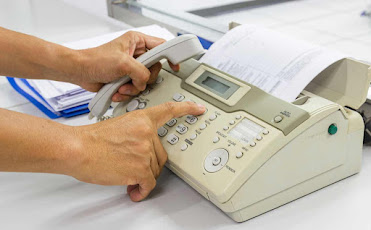The Evolution of Fax Services: From Analog to Digital
The history of fax services is a testament to the remarkable journey of communication technology. From its humble beginnings in the 19th century to the sophisticated digital solutions of today, fax services have played a crucial role in bridging the gap between physical and digital document transmission. This article will take you on a comprehensive exploration of the evolution of fax services, covering each phase in detail.
In the early 19th century
the seeds of fax technology were sown by inventors like Alexander Bain and Giovanni Caselli. These visionaries laid the foundation for a revolutionary concept: transmitting images over telegraph wires. Their pioneering work paved the way for the development of fax technology, which would change the face of communication forever.
Early Concepts: Alexander Bain's experiments in the 1840s laid the groundwork for the idea of faxing. His invention, the "fax machine," used a stylus to scan and transmit handwritten messages.
Teleautograph: Fast forward to 1888, when Elisha Gray introduced the "teleautograph." This groundbreaking invention allowed handwritten messages to be transmitted electronically over long distances, marking the first practical use of fax technology.
The mid-20th century witnessed the rise of analog fax machines, ushering in a new era of document transmission. These machines operated by scanning documents, converting them into analog signals, and transmitting them over telephone lines. The adoption of these machines by businesses and government agencies revolutionized the way documents were shared.
Working Principles: Delve into the intricate workings of analog fax machines, from the scanning process to the modulation of signals for transmission.
Widespread Adoption: Explore how businesses and government institutions embraced analog fax machines, leading to their ubiquity in offices around the world.
The 1980s brought a seismic shift in fax technology with the introduction of digital faxing. Digital technology improved image quality, error correction, and transmission speed, setting the stage for the modern fax services we know today.
Introduction of Digital Faxing: Explain the transition from analog to digital faxing, emphasizing the advantages of digital transmission over analog.
Group 3 Fax Standard: Highlight the Group 3 fax standard, a global milestone that standardized fax transmission, making it more efficient and reliable.
As the internet became an integral part of our lives, fax services evolved to integrate seamlessly with digital communication methods.
Fax Over IP (FoIP): Discuss the emergence of Fax Over IP, which allowed faxing over internet protocol networks, bridging the gap between traditional faxing and digital communication.
Email-to-Fax and Fax-to-Email: Explore the convenience of email-to-fax and fax-to-email services, which made it possible to send and receive faxes through email clients, revolutionizing the way businesses communicated.
In the 21st century
online fax services emerged as the modern solution to document transmission, offering unparalleled convenience and efficiency.
Cloud-Based Faxing: Describe how cloud-based fax services eliminated the need for physical fax machines and offered scalable, cost-effective solutions for businesses.
Security and Compliance: Emphasize the importance of security features and compliance measures in modern online fax services, particularly in industries like healthcare and finance.
With the proliferation of smartphones, mobile fax apps have taken center stage, allowing users to send and receive faxes from the palm of their hand.
Mobile Accessibility: Discuss the rise of mobile fax apps and their impact on business productivity by providing on-the-go faxing capabilities.
Enhanced Productivity: Highlight FaxServices how mobile fax apps have empowered professionals to stay connected and efficient, no matter where they are.
As we peer into the future, the evolution of fax services continues, driven by emerging technologies and changing communication needs.
AI and Automation: Predict the role of artificial intelligence and automation in the future of fax services, including features like document recognition, routing, and enhanced security.
Integration with Emerging Technologies: Explore how fax services may integrate with emerging technologies such as blockchain to provide even greater security and traceability.
Conclusion
The evolution of fax services from analog to digital is a testament to human ingenuity and the relentless pursuit of more efficient communication methods. While the traditional fax machine may have become a relic of the past, the essence of faxing lives on in the world of digital communication. As we look to the future, the continued innovation in fax services promises to meet the evolving needs of businesses and individuals alike, ensuring that this vital form of communication remains relevant in our ever-changing world.

Comments
Post a Comment